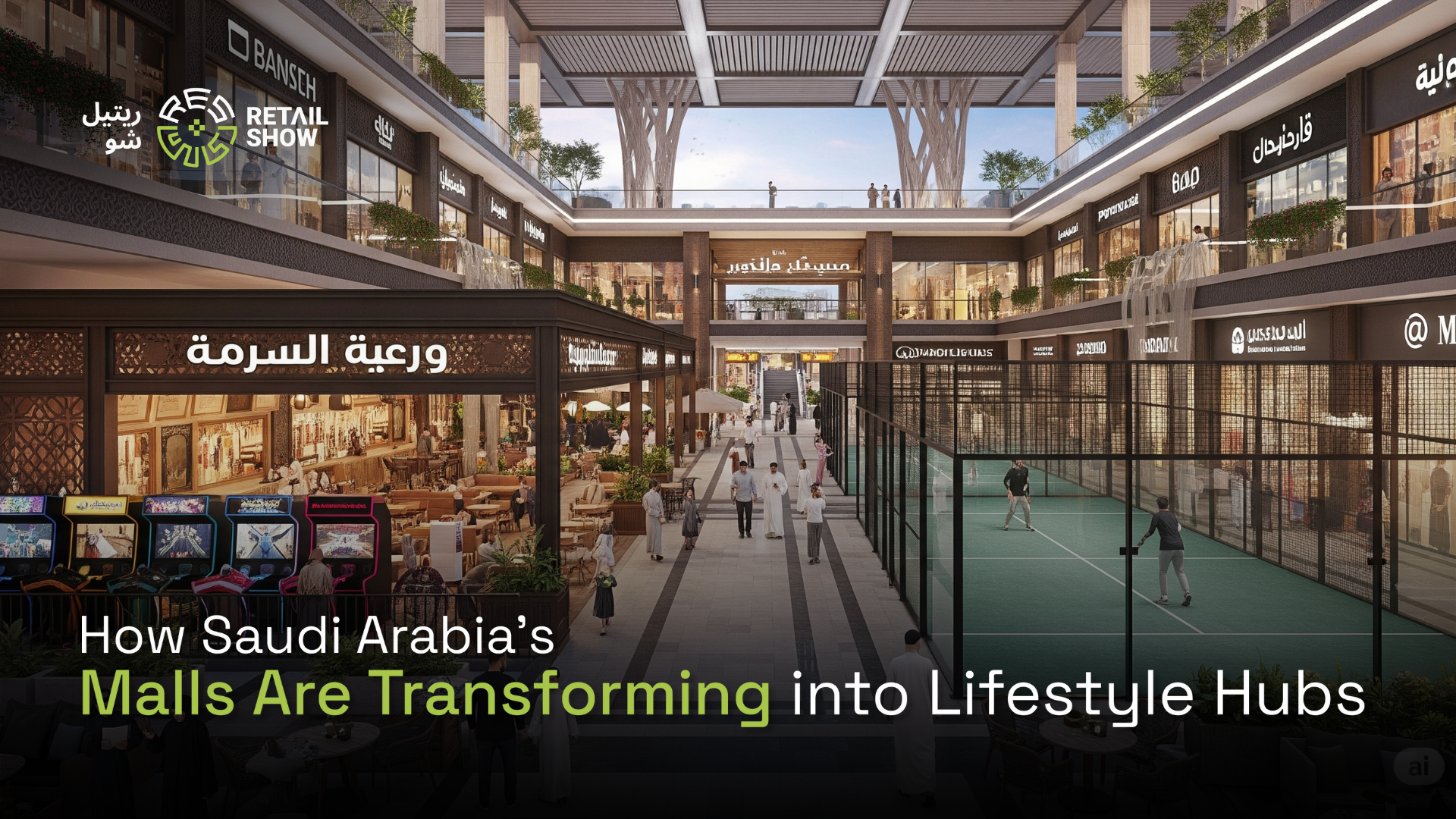If recent data is any indication, the Kingdom’s retail landscape is undergoing one of the most significant evolutions in its modern history. The traditional shopping mall, once a place defined by anchor tenants and predictable layouts, is rapidly morphing into something more complex and compelling: a lifestyle destination designed to attract, engage, and retain a new kind of consumer.
This transformation is laid out in detail in the JLL Kingdom of Saudi Arabia Retail Market Dynamics Q1 2025 report. The report, rich in both data and insight, offers a snapshot of a sector in flux, where shifting consumer expectations and competitive pressures are redefining what it means to shop, eat, and spend time in public spaces.
Retail Spaces with a Pulse
One of the clearest signals of change comes from the performance of super-regional and community malls, which are increasingly outpacing their regional counterparts. In Riyadh, vacancy rates dropped slightly to 5.1 percent in Q1 2025, down from 5.2 percent a year earlier. While this improvement may seem modest, it reflects a stable and sustained demand for quality retail space in the capital. More notably, average rental rates in community malls in Riyadh climbed by 2.2 percent year-on-year to SAR 2,160 per square meter, and by 1.8 percent in super-regional malls, now at SAR 3,030.
Jeddah, meanwhile, tells a more dynamic story. The city’s overall retail vacancy fell sharply—from 17.7 percent to 13.0 percent—signaling a strong rebound in demand and growing consumer engagement. Community malls in Jeddah, in particular, emerged as clear winners, with average rental rates increasing by a robust 7.6 percent to SAR 1,930 per square meter. Regional malls, by contrast, continued to face challenges. Leasing rates there dropped by 15.8 percent, underscoring a broader trend: shoppers are migrating away from traditional formats in favor of more interactive and diversified environments.
Experience as a Retail Strategy
The JLL report highlights a growing emphasis on experiential retail. The new face of shopping in Saudi Arabia isn’t just about transactions. It’s about environments that foster leisure, recreation, and social interaction. Cinemas, arcades, gyms, and padel courts are no longer considered fringe additions. They are fast becoming essential features in modern malls.
This shift is especially visible in destination and lifestyle developments, where open-air formats are increasingly common. These malls integrate retail with food and beverage, entertainment, and social spaces, creating environments that invite longer stays and encourage repeat visits. Consumers are gravitating toward spaces that offer more than products—they want experiences that reflect their evolving lifestyles.
The food and beverage sector, in particular, is adapting quickly. A notable trend from the report is the move toward smaller average space requirements, especially among F&B operators. These compact units are well suited to dynamic mall layouts and can adapt to changing consumer flows with greater agility.
Healthcare is also stepping into the retail domain. Pharmacies and clinics are expanding their footprint in commercial spaces, signaling a broader move toward convenience-driven retail environments that serve multiple aspects of everyday life.
Supply Is Rising, But So Is Selectivity
With 6.94 million square meters of existing retail space and nearly 288,000 square meters expected to be added this year, Saudi Arabia’s retail market is expanding rapidly. Riyadh alone saw the delivery of approximately 114,100 square meters of new gross leasable area in Q1 2025, raising the capital’s total stock to around 4.4 million square meters. Another 195,400 square meters is expected by year-end.
Jeddah also experienced significant growth, with 223,200 square meters of new retail space added in the first quarter. This brings the city’s total to nearly 2.6 million square meters, with an additional 92,300 square meters forecast for the rest of the year.
However, this influx of supply is not without consequences. The market is becoming increasingly tenant-favored, giving occupiers more bargaining power. This is evident in the flexible lease terms and rent discounts now being offered by landlords. The competition for quality tenants is fierce, and property owners are adjusting their strategies accordingly.
The JLL report describes this as a competitive environment where landlords must be proactive, offering incentives and rethinking traditional leasing models. The pressure to stand out is not just about location or size anymore—it’s about value, concept, and adaptability.
The Road Ahead: Hyper-Local, Tech-Enabled, and Experience-Driven
Looking ahead, Saudi Arabia’s retail sector is expected to continue its trajectory toward more integrated, flexible formats. According to the report, traditional malls may face consolidation, while newer developments will increasingly focus on smaller, uniquely positioned properties that mix retail with entertainment, dining, and cultural experiences.
The emphasis will also shift toward promoting local brands, aligning with national economic goals. Locally produced goods and Saudi-born retail concepts will receive more visibility and support, enhancing the Kingdom’s retail identity and catering to a consumer base that is both proud of its heritage and eager for innovation.
Technology and design will also play greater roles. Future malls are expected to offer more immersive and interactive experiences, using tech-driven solutions to optimize layouts, customize offerings, and deepen consumer engagement.
In this evolving landscape, success will belong to those who understand that retail is no longer about what’s for sale—it’s about how people feel when they walk through the doors. Malls are becoming lifestyle hubs, and that transformation, as detailed in the JLL Q1 2025 report, is only gaining momentum.


